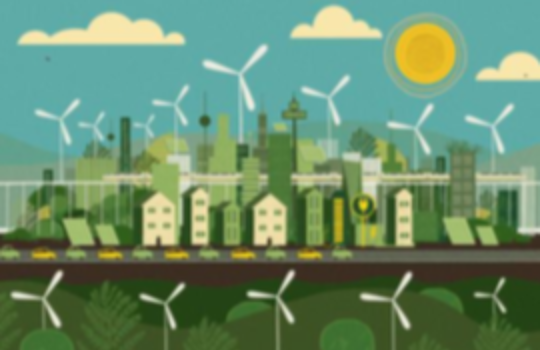According to the Center for Sustainable Systems at the University of Michigan, “A carbon footprint is the total greenhouse gas (GHG) emissions caused directly and indirectly by an individual, organization, event or product.” They continue, “it is calculated by summing the emissions resulting from every stage of a product or service’s lifetime (material production, manufacturing, use phase, and end-of-life disposal).” From the perspective of the school, how does a GWUOHS student’s carbon footprint compare to a traditional brick and mortar school student? Let’s put our best foot forward and look into transportation, paper, and lunchtime.
The life of an online student begins like any other student. They wake up, eat a healthy breakfast, shower, and prepare to go to school. One thing that is noticeably different; the online student does not use transportation to get there. Traditional students are dropped off and picked up from brick and mortar schools by their parents. Others take the bus — teachers and staff drive to work every day. Many parents are known for idling in carlines waiting to pick up their children after school. Transportation emits gases into the atmosphere when fossil fuels are burned. Large amounts of carbon dioxide CO2, in addition to methane CH4 and nitrous oxide N2O, are released. Greenhouse gases are harmful to the Earth. They capture heat in Earth’s atmosphere and cause surface temperatures to increase. The United States Environmental Protection Agency (“EPA”) reports that the most significant amount of greenhouse gas emissions are from the transportation sector – almost 29% in 2017.
Most of GWUOHS textbooks, if not all, are provided online in virtual classrooms. Students typically take notes electronically. Announcements and flyers are all in cyberspace for review. Assignments are written and submitted electronically. In comparison, traditional schools distribute large amounts of paper lessons and textbooks, which add to the problem of deforestation. Paper comes from trees. Trees are essential to many lifeforms on the planet, including human life. They absorb harmful carbon dioxide CO2 and produce breathable oxygen O2. When trees are cut down to make paper goods like textbooks and paper, often harmful carbon dioxide CO2 is released back into the atmosphere. It is estimated that deforestation is responsible for 12% of all greenhouse emissions.
The carbon footprint of an online student during lunchtime is also quite different. Healthy meals are prepared at home using reusable dishes, glassware, and silverware. There is no need for plastic or brown bag lunches. Plasticware is common in school cafeterias, in addition to plastic water bottles, and milk cartons. It takes 1,000 years for plastic to decay. Not all plastic is recyclable, and only some end up in landfills. Even worse, roughly 13 million tons of plastic end up in our oceans every year, all harmful to the environment and sea life — plastic impacts the world in many ways. The amount of energy needed to make plastic produces a lot of CO2 heating up Earth’s surface, impacting climate. Not only is plastic harmful to the environment, but it is also deadly to humans. Ingesting plastic in any capacity can be dangerous. Eating a hot meal with plasticware, say, for instance, eating hot soup with a plastic spoon can release harmful toxins like dioxin, Biphenyl A, and Phthalates into the human body. These can cause kidney stones, certain types of cancers, and an imbalance of hormones in humans.
Overall, the carbon footprint of a GWUOHS student is less than that of a brick and mortar school student. Limiting transportation to and from school, using online textbooks, and not using disposable plastics during lunch helps reduce greenhouse gases and protect Earth’s future. We should all be aware of how our carbon footprint contributes to climate change.



